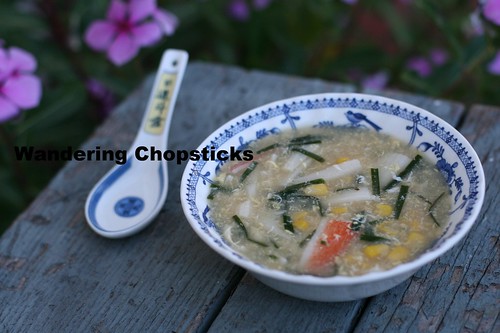
"Food -- or
makan, as we call it -- is a national obsession," said
Cheryl Lu-Lien Tan in "
A Tiger in the Kitchen: A Memoir of Food and Family." "In the fifteen years that I've lived in the United States, I've often said to American friends that, when it comes to Singapore, I miss the food first and then my family. They think I'm joking."
(Tan is a former classmate, although Facebook and food have brought us closer that four years of undergrad ever did.) In the first chapter of her food memoir, Tan waxed nostalgic about
bak kut teh (Chinese pork bone tea soup), Hainanese chicken rice, ice
kacang (Malaysian shaved ice),
Singaporean Chilli Crabs, and Singaporean roti John.
Most of the dishes I'm familiar with, but the last was new to me.
"The influence of the British -- whom the locals called Johns when Singapore was a colony -- inspired the Malay dish of roti John, which features a baguette topped with beaten eggs, minced mutton, and onions that's then quickly panfried and served with a spicy tomato dip," Tan described.
That sounded delicious, as did her descriptions of making kaya jam and pineapple tarts. But, as I wasn't about to make 100 pineapple tarts or 60 mooncakes or 80
otak (Singaporean spiced grilled fish paste), the recipes in her book weren't quite feasible for me.
A bit of Googling and I came upon this
YouTube video by the Singapore International Foundation about roti John at the Shukor Stall Makanan Istemewa featuring Sufiah Nordiyana, granddaughter of the hawker who invented and/or popularized the dish in 1976.
I've changed the methodology a little bit, to scale down for cooking for one as opposed to hundreds. I used Vietnamese-French bread and substituted the mutton with beef, but kept the egg and onion. I also added a chopped scallion for some color and a dash of curry powder and garam masala as a nod to the Indian origins of the dish. Since I wasn't quite sure what the tomato chili sauce tasted like, I drizzled Thai Shark Sriracha, which is sweeter than the Huy Fong Foods, Inc. version.
British, Malay, Indian, Singaporean, the various influences that went into creating this dish, resulted in a delicious sandwich that was perfect for lunch. And again for dinner.




